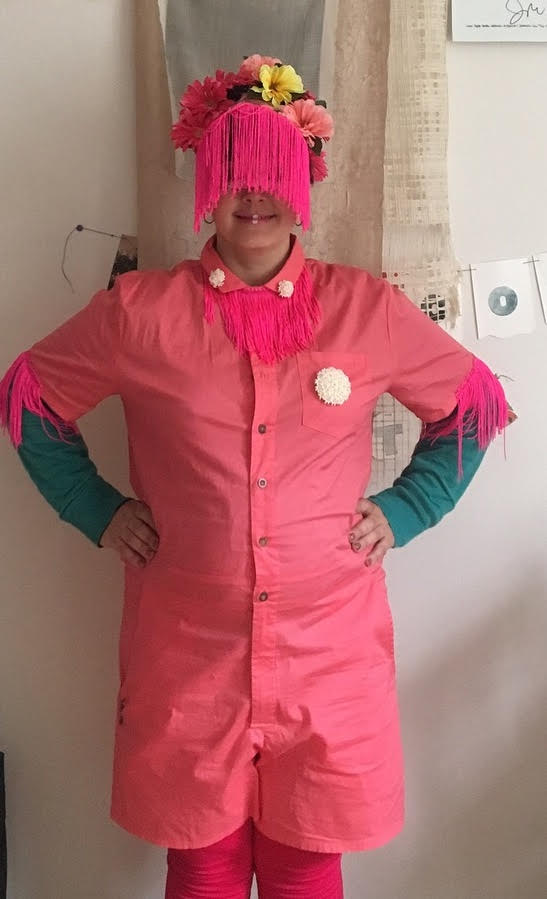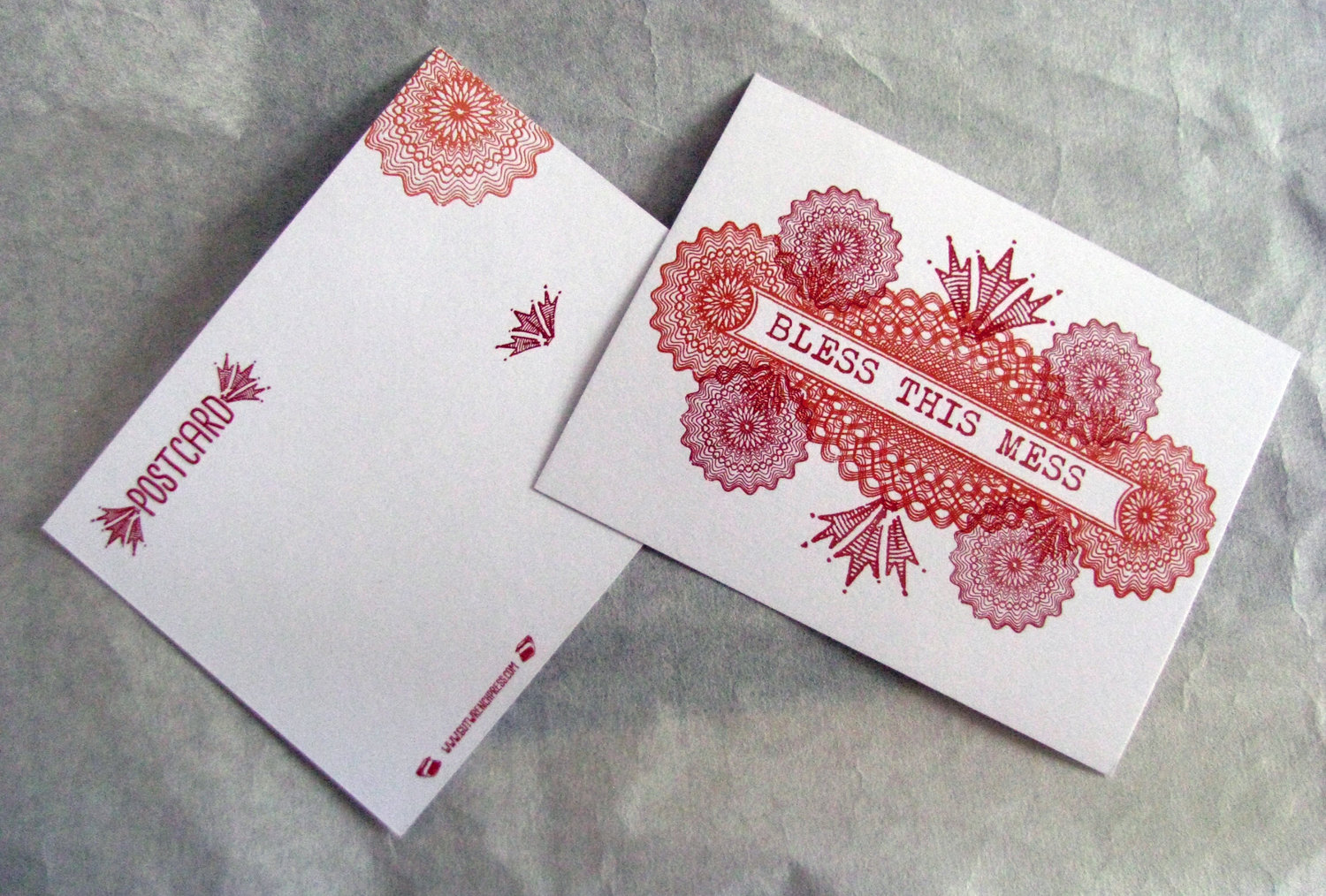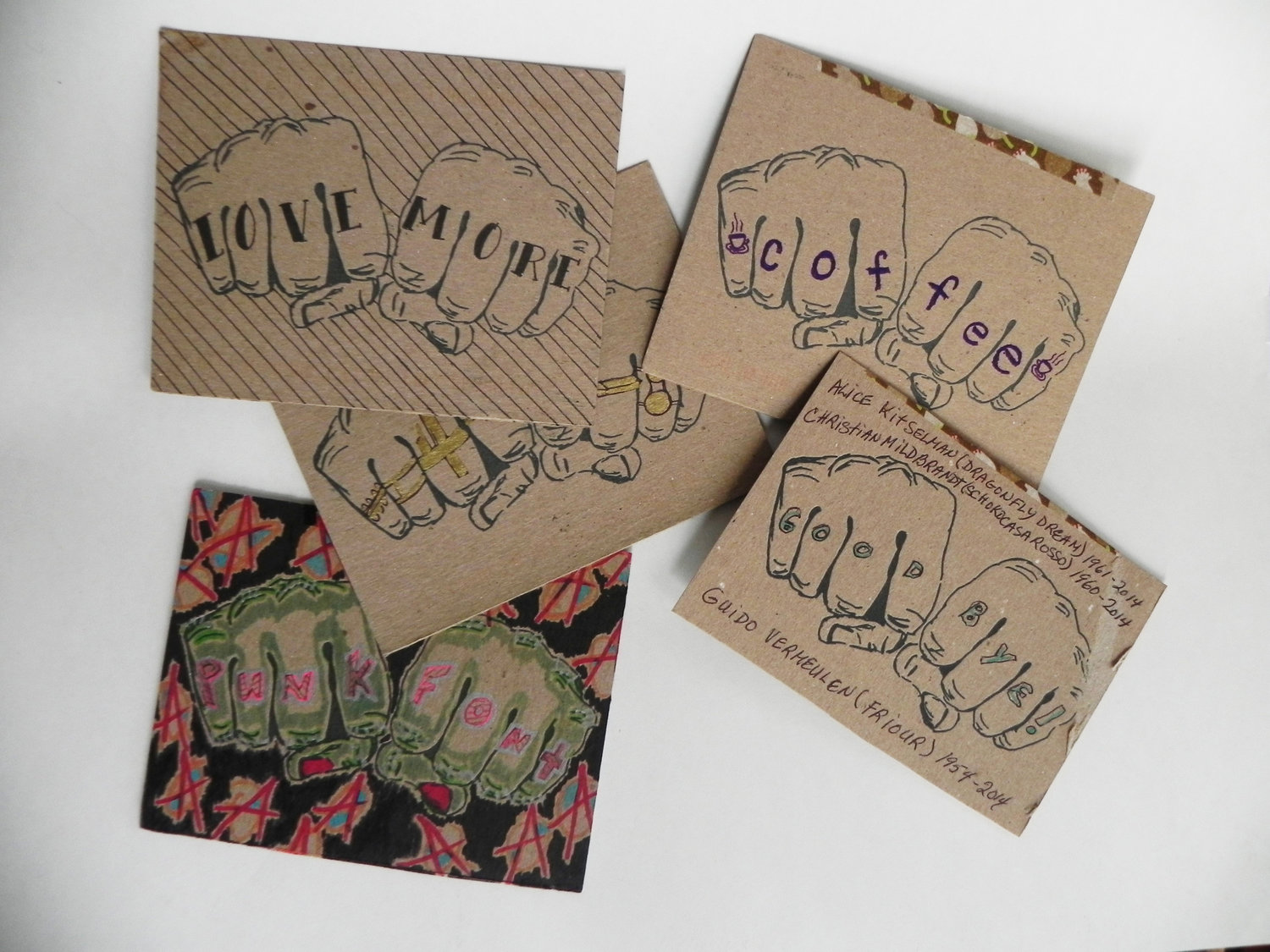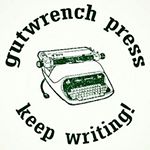 Hope Amico of Gutwrench Press is a printer based out of New Orleans, Louisiana.
Hope Amico of Gutwrench Press is a printer based out of New Orleans, Louisiana.
I met Hope Amico this past June at a massive librarians’ conference (the ALA) in New Orleans. We were tabling in the Zine Pavilion — me for Broken Pencil and Hope for Gutwrench Press, which she founded in 2008.
 Gutwrench Press produces zines, hand-bound books and, my personal favourite, the Keep Writing Project, a monthly interactive postcard subscription (I’m two months in and loving it).
Gutwrench Press produces zines, hand-bound books and, my personal favourite, the Keep Writing Project, a monthly interactive postcard subscription (I’m two months in and loving it).
Hope started the Keep Writing Project “as a way to keep in touch with friends and penpals that grew to a subscriber list of 200, from many states and countries.” Each month, she collaborates with an artist to design a letterpress card comprised of two detachable postcards: one is a letterpress print you keep, the second poses a thought-provoking prompt. Subscribers respond to the prompt each month and mail the second postcard back to Hope to exhibit. She just celebrated the project’s 10-year anniversary and has sent more than 120 postcards at this point. It’s clear Hope’s been around the (printing) block. So, I asked her to share some of the basics to catch me up.
What exactly is letterpress printing?
Traditionally that means using moveable type to set every letter of your text, just like Gutenberg did for the first printed Bible. Letterpress printing is a kind of relief printing — there is some kind of image and the ink is rolled across the top — a stamp is relief printing! So are woodcuts and linoleum.
What’s your process?
I rely mostly on computer images and text that I manipulate, and then order a hard polymer plate to be made of my design from a company in California called Crown Flexo. Then I print using the plate.
What other techniques do you use?
I’ve also used a risograph machine — which is like a copier crossed with a silkscreen. Screens are burned in the copier, which allow toner through that corresponds to your image. Riso printing can be done in a variety of colours, though generally one colour at a time.
What’s your advice to zinesters who want to branch out from, say, cut-and-paste techniques?
Be intentional with your print choices. Use the medium that is suited to what you want to accomplish and is reasonably affordable!

I definitely think there is a place for printing in zine-making. There are low-tech ways of silkscreening using stencils. What I’ve loved about zine culture is making something beautiful in the most affordable, accessible way possible. You can still photocopy the insides and create a printed cover or bonus. You can scan your cut-and-paste layout and silkscreen a page.
Nothing beats good content. I’ve used letterpress covers, riso printed maps, digitally printed insides, silkscreen covers — but I think what sticks with me is good content.
I remember during your talk at the Zine Pavilion you told this story about a snafu with a printer and an airport. What happened?
In 2012, I studied abroad for six months, but I did not want to abandon the Keep Writing Project. I bought a gocco printer — a Japanese all-in-one printer that works kind of like silkscreen and kind of like a stamp. The screens can be exposed with a flashbulb, from an image drawn in sharpie. Very low-tech and self-contained. I figured each month I could draw one screen and print the postcards I needed.
When I got to the New Orleans airport I checked two bags and carried on my bag with the printer. It had everything I needed to print — very flammable oil-based ink, flashbulbs and batteries. When I got to security, I quickly realized the error of my ways: I was bringing something explosive onto a plane! They swiped everything I had and asked me a million questions. I am lucky and they let me go, and I barely caught my plane.


